Portraits on the Road: America’s Itinerant Painters
An inspiring form of American folk art by traveling artists who captured daily life with vivid detail. These portraits remind me why imperfection can be more alluring than accuracy.
Good morning, I’m writing from our little desk in the bedroom (where the AC actually works). It’s HOT today, friends. Stay safe out there!
One of my favorite spots at The Met is the American Wing, especially the galleries dedicated to 18th and 19th-century American art. During a recent visit, I found myself lingering in front of a portrait by Ammi Phillips, Mrs. Mayer and Daughter, painted around 1840. The mother’s calm expression and the cleverly painted layers of frothy lace absolutely charmed me. I later learned that Phillips was an itinerant painter, one of many often self-taught artists who traveled from town to town, offering portraits to (typically) middle-class patrons. Their work covers a range of styles, from strikingly minimal to skillfully refined.
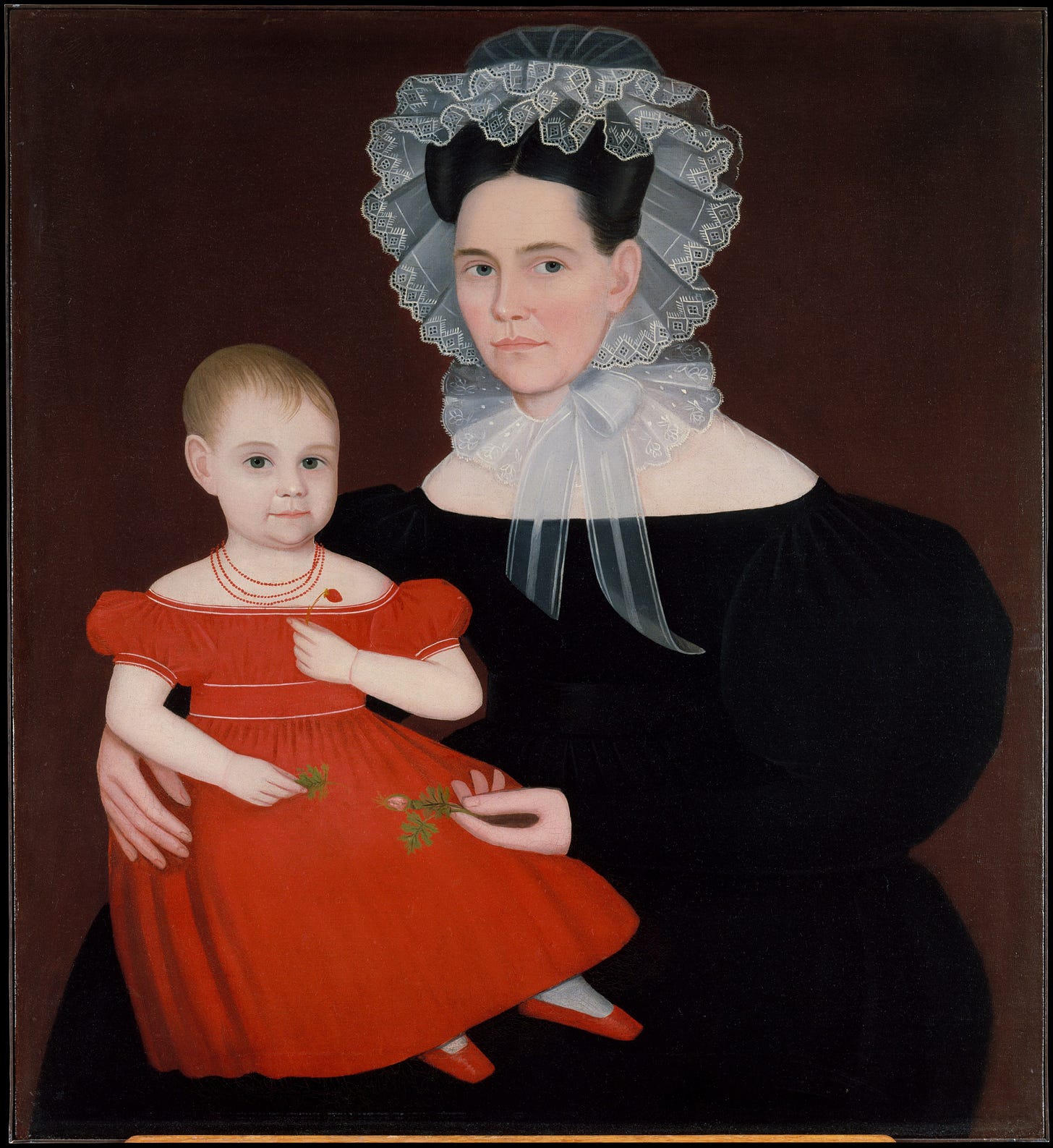
Of course, before photography became widespread, hand-painted portraits were often the only way to preserve a person’s likeness. (Another popular option was the cut-paper silhouette, an accessible art form I love, and one I’ll share more about in a future post!) While I’ve previously written about early photographic portraiture and the sentimentally adorned albums it inspired, I’m equally fascinated by the work that came just before. I find these paintings personal, often a bit strange, full of resourceful choices, tropes from their era, and completely captivating.
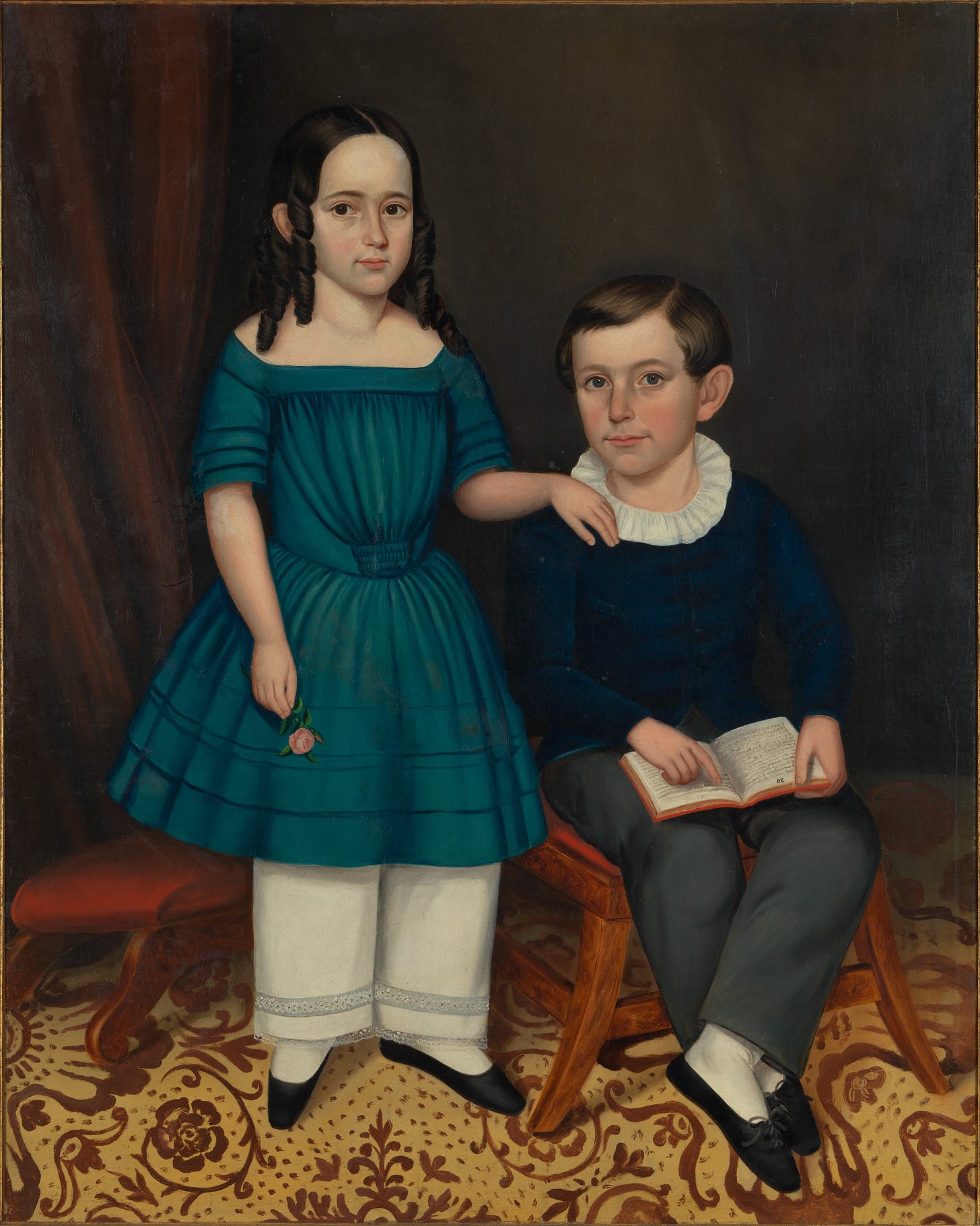
Previously, portraiture in America was the domain of the wealthy elite, but in the early 19th century, folk painters helped democratize the art form. Most were self-taught, often branching into portraiture from trades like sign painting or furniture decoration. They responded to local demand by traveling throughout the Northeast and beyond, painting thousands of individuals: shopkeepers, ministers, schoolchildren, and even the occasional posthumous portrait of a lost loved one. These paintings were created on canvas, paper, and wooden panels, depending on the availability of materials.

Many of these artists infused their work with a subtle, sometimes unintentional whimsy, an illustrative quality that makes their portraits feel both dreamlike and deeply human. The style is often described as “naïve” or “folk” art, characterized by simplified forms, flattened space, and a disregard for perspective or anatomical precision.
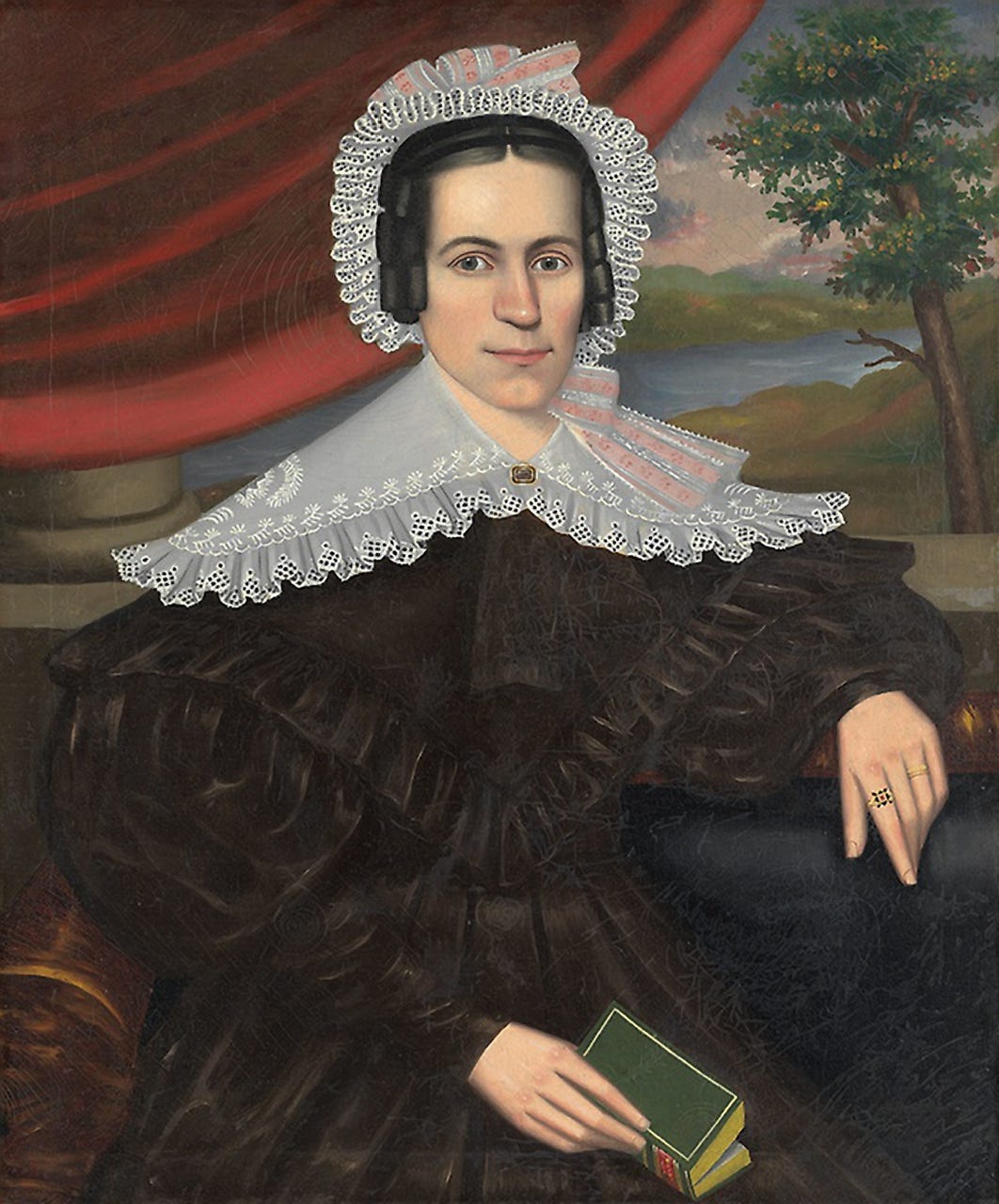
Nonetheless, the portraits are remarkably alluring. Sitters often hold symbolic objects, such as books, pets, birds, dolls, or bouquets of flowers. These delightful details likely convey stories about loss, status, love, and occupation that held significance for the subjects. Some may say these paintings lack polish, but to me, they exude presence and magnetism.
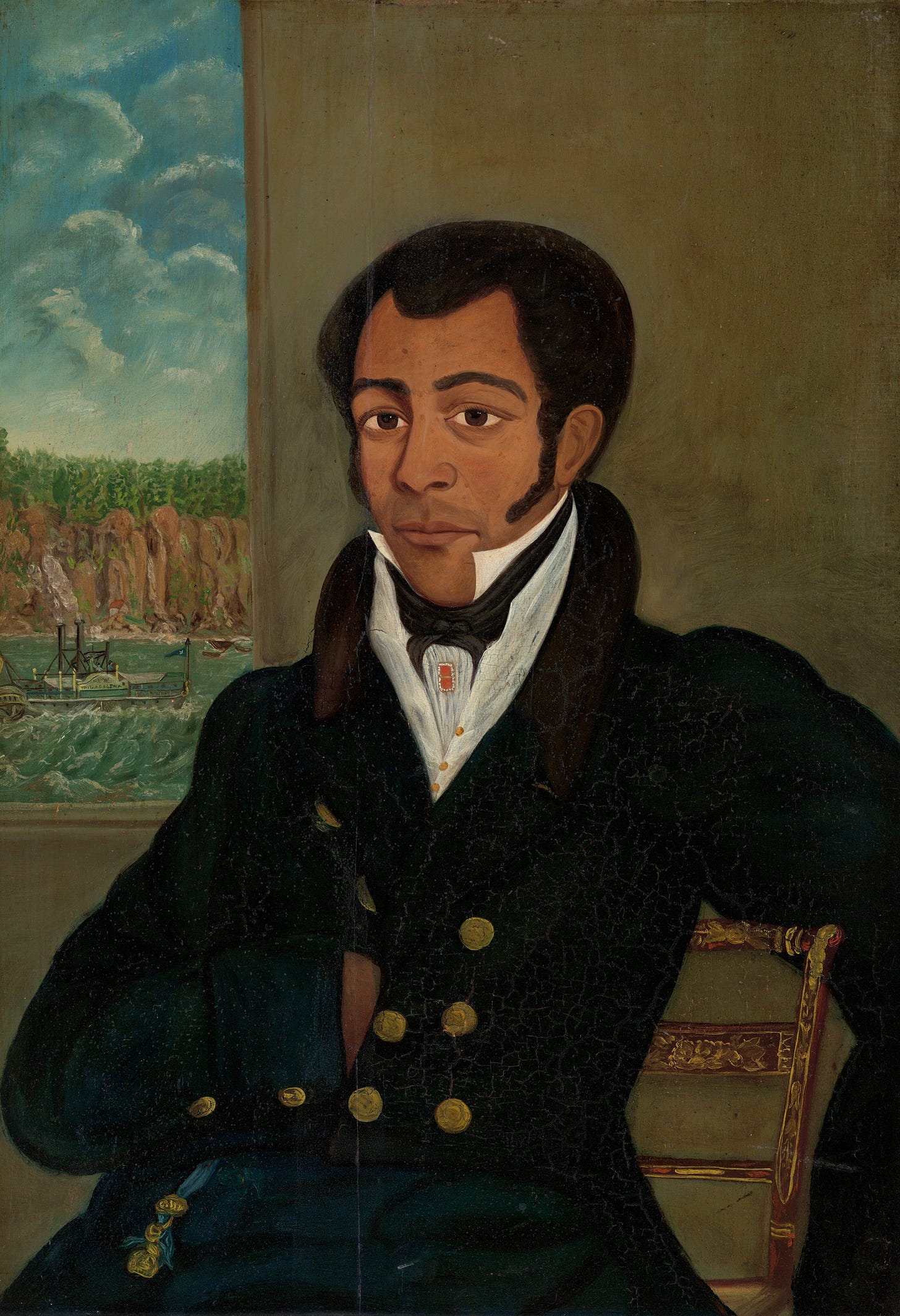
During a visit to the National Gallery of Art in D.C., I was pleased to spot several more examples in person. It’s sometimes tricky to determine whether a true itinerant painter created a portrait from this period (see example above where the artist is unknown) or by someone with a studio in a larger town. As I learn more about these artists, it seems likely that many of them did both, traveling for work and then settling down during times when demand allowed.
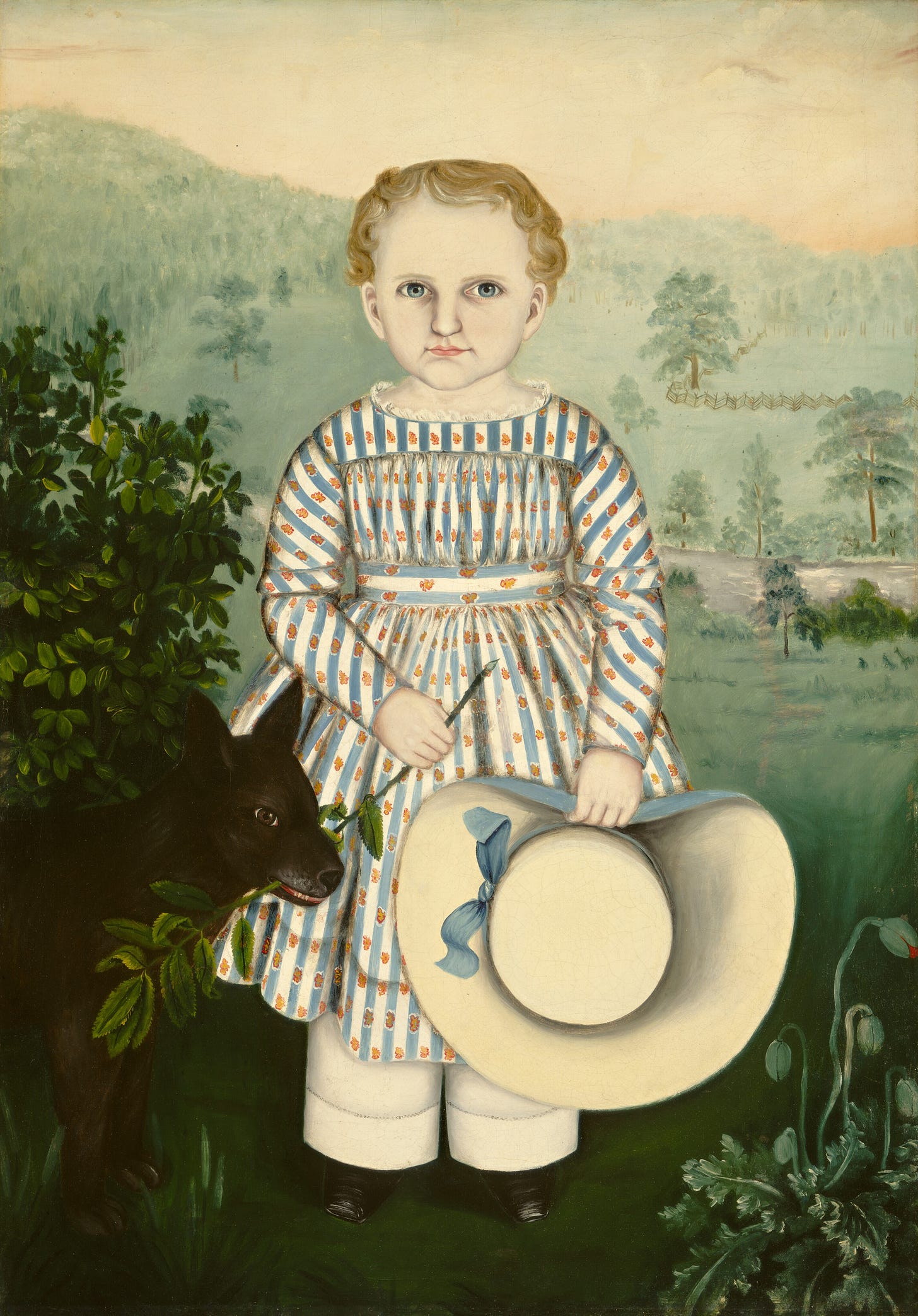
Here are just a few prominent itinerant painters:
Ammi Phillips (1788–1865): Perhaps the best-known itinerant portraitist, his early work was flat and quick; later, he painted rich, detailed portraits like Mrs. Mayer and Daughter. (above)
William Matthew Prior (1806–1873): A key figure in the Prior–Hamblen School, he painted both simple and more refined portraits. (I am totally smitten with the simpler ones!)
Erastus Salisbury Field (1805–1900): Began as a portraitist and eventually created large-scale, visionary historical paintings.
Joseph Whiting Stock (1815 – 1855): Also brought a strong personal style and technique to his itinerant work. He advertised his services in local newspapers, primarily in Massachusetts, Rhode Island, and upstate New York.
Sheldon Peck (1797 – 1868): Later in his career, he adopted a more vibrant color palette to compete with the advent of daguerreotypes. (And, I once got to make a frame for one of his works!!!)
Susan Catherine Moore Waters (1823 – 1900): As one of the few women itinerant painters, Waters opted to paint on materials that were readily available to her, primarily mattress ticking, cotton, and linen, instead of canvas.
I am fascinated by the paintings that seem to have been created with expediency, as well as by the pieces that appear to have required more time and skill. I enjoy how a proportion can sometimes be slightly askew (check out the tiny feet above). These little quirks are what I find appealing about them; they seem to reveal not only the personality of the person(s) being painted but also that of the painter.
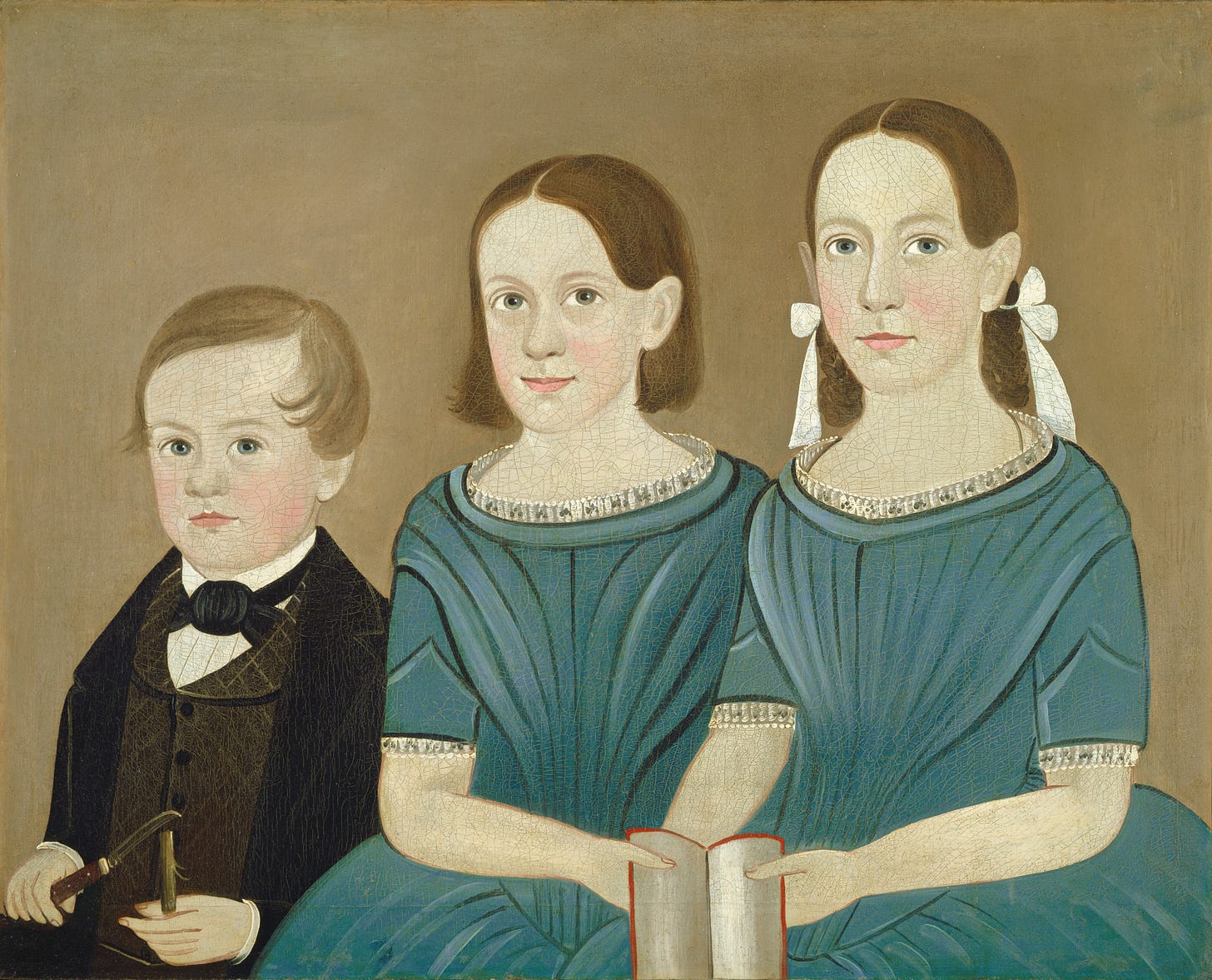
In case you missed it, I previously shared some slightly odd painted portraits of Ryan and me—during my papier-mâché frame phase—drawing inspiration from both American itinerant painters and Renaissance artists like Corneille de Lyon (hello, green backgrounds!). Clearly, I can't paint like the Renaissance masters, but I’m learning to embrace the imperfections. These so-called “flaws” are often what define the very tradition of folk portraiture I love so much.
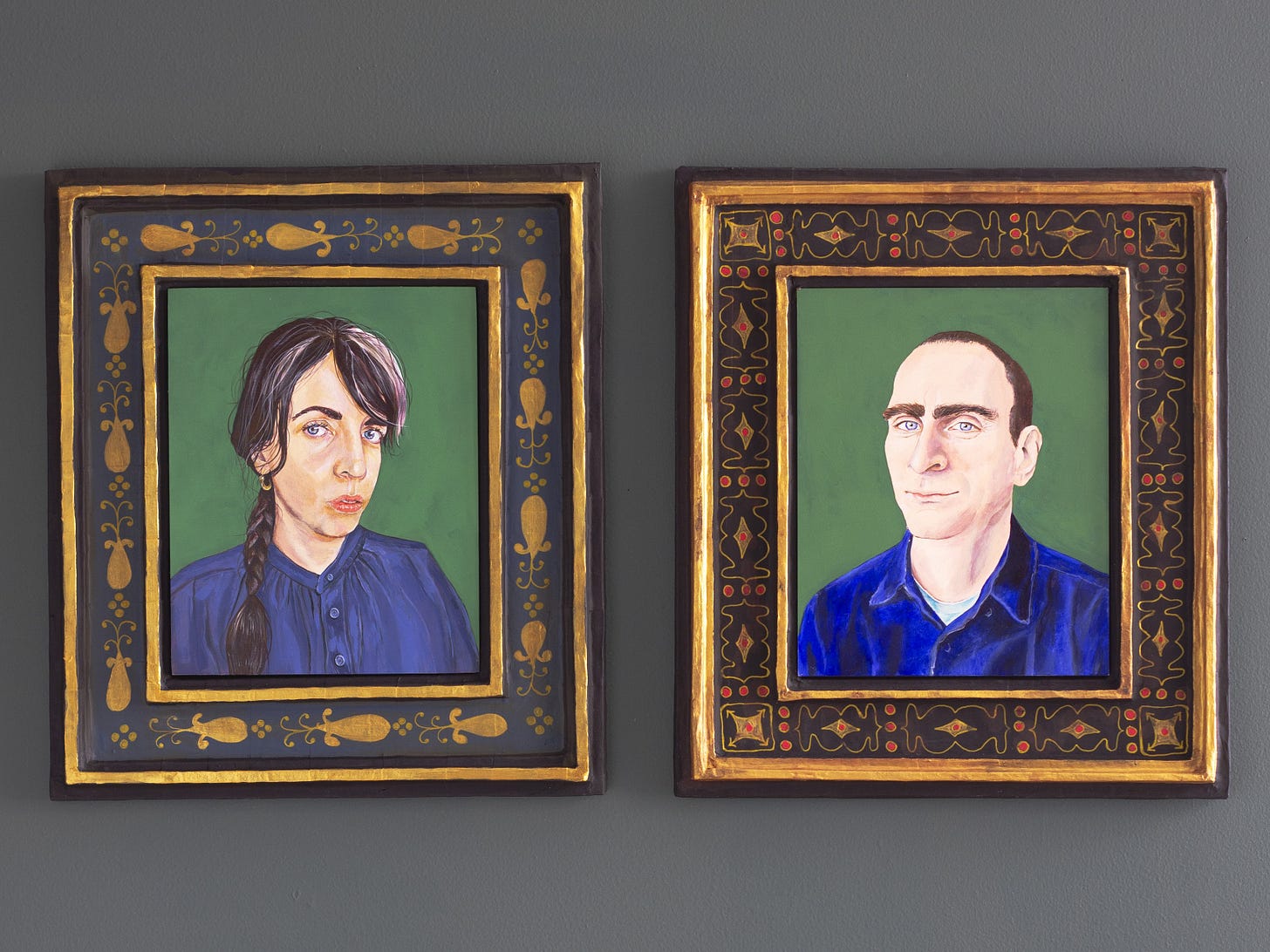
Right? Right! As artist and writer Amie McNee says, “I grieve all the art not made because of perfectionism.” So here’s my reminder to myself, and to you, to make art, however you can, and share it often!
When these traveling painters moved from town to town, many created thousands of portraits. People wanted their work!! And much of it is still treasured and sought after today. These portraits remind me that art doesn’t need to be exact to be true, and that an oddity or imperfection might be precisely what makes something memorable or engaging. I know I’ve only scratched the surface, but I’m excited to keep learning and to keep filling my cup with inspiration from these remarkable artists. I’ve created a Pinterest board with more examples if you’d like to explore further as well!
Thanks for reading and being curious about craft with me! Have you seen one of these paintings in your travels? I’d love to hear about it!


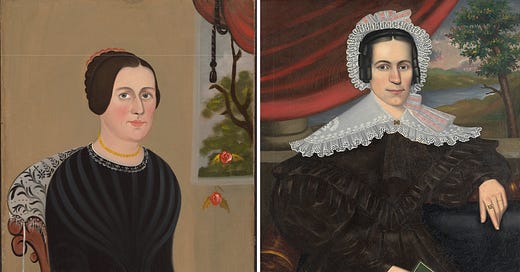


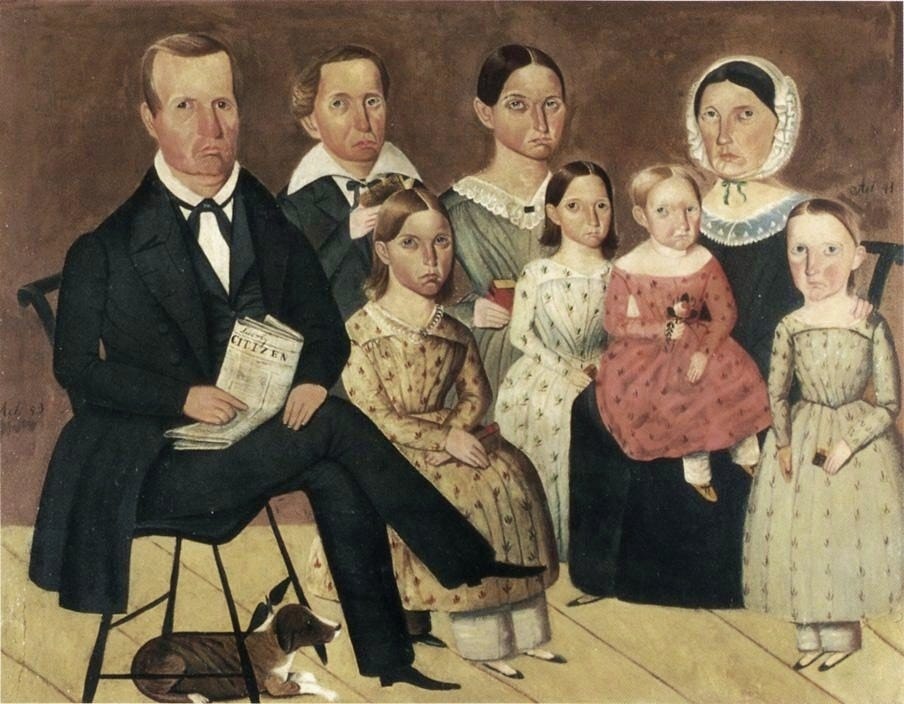
I love this post.
I loved this part too:
““I grieve all the art not made because of perfectionism.” So here’s my reminder to myself, and to you, to make art, however you can, and share it often!”
Thank you for the reminder!
PS. If anyone has seen a book about Itinerant Painters, let me know?